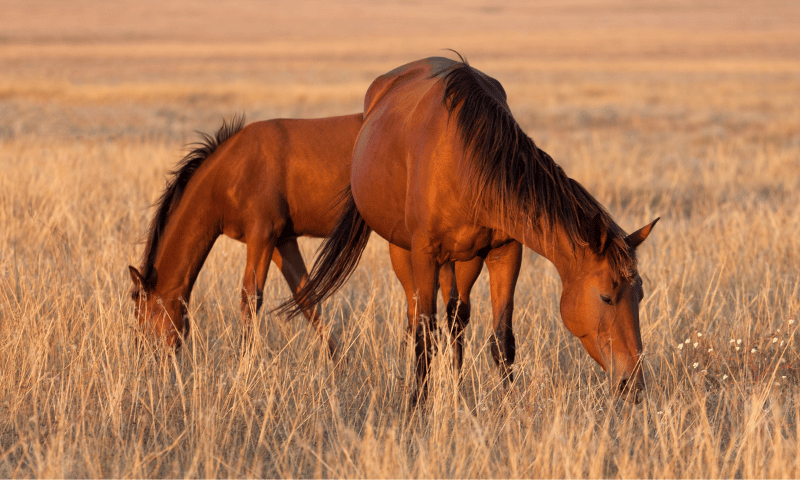Having a horse with a beautiful, sleek and shiny coat that reflects its health and vitality is what most horse owners strive for. If your horse’s coat is looking a bit dull, here are few simple steps to follow to help bring the bloom back into your horse’s coat.
The first thing to do is make sure your horse is receiving a well-balanced diet, as this really is the foundation for health and vitality. When nutritionists discuss horses being on a balanced diet they are referring to the animal receiving all of its requirements for energy, protein, fat, minerals, vitamins and fibre.
Common nutrient deficiencies in essential amino acids, copper and zinc are often the cause of a dull, rough coat, skin issues and poor hoof quality. Using a quality supplement such as MegaMin Equine Enhancer that has been scientifically formulated to promote overall health, while also actively supporting, hoof quality, coat condition and gut function, will help mend these nutrient gaps while providing extra beneficial nutrients for coat and skin health including methionine, vitamin A and a targeted level of biotin.
If your horse is grazing subtropical pasture that is comprised of grasses that consist of high levels of calcium binding oxalate such as setaria, buffel, couch or kikuyu, ensure the calcium to oxalate ratio is balanced by using a good quality calcium supplement like MegaMin Bone Defender. A deficiency in calcium has many negative consequences with one of them being a rough, dull hair coat.
Once the horse’s diet is balanced, the next step is to add some oils to the ration. Green pasture is usually rich in the essential omega 3 and omega 6 fatty acids but if pastures are of lower quality or consist of subtropical grasses or the horse is receiving the majority of its forage from hay then the horse will often benefit from the addition of a good quality oil as deficiencies in these essential fatty acids can result in a dull coat.
Increasing the level of omega 3 and 6 fatty acids in the diet can be achieved by adding ingredients like extruded full fat soybean meal, sunflower seeds or linseeds to the ration. Or liquid oils can be added like cold pressed linseed oil, canola or soybean oil.
If horses are being fed a high grain diet, the ration will be higher in omega 6 fatty acids, therefore, adding linseeds or linseed oil which is higher in omega 3 fatty acids will be of more benefit in this situation. There are many supplements on the market, however, feeding 1-2 cups per day of linseed is often a cheaper option (although more work is required) to increase omega 3 fatty acids in the horse’s diet. If you are going to feed linseed it is best to grind the seed immediately prior to feeding (a coffee grinder is very useful) in order to break the seed coat, otherwise the seeds will pass through the gastrointestinal tract undigested. The oil can go rancid very quickly when exposed to air so it’s important to feed immediately after processing.
Controlling parasitic infestations is of extreme importance so don’t forget to practice good management when it comes to worms, as nothing will take the shine off a horse’s coat faster than a heavy parasitic burden. Additionally, if your horse is prone to Sweet Itch or Queensland Itch try to control its exposure to biting insects to help minimise scratching and help its coat to improve. Stabling horses under strong fans, using insect repellents, insecticides and rugging have all been used with varying levels of success in these situations.
If you are chasing a deeper, darker coat colour in your horse, try using ingredients that have been reported to darken coats like lucerne or a small amount of molasses. You could also try products that contain a compound known as gamma oryzanol, which is found naturally in rice bran. Remember if your horse has a metabolic condition and has to have limited amount of starch and sugar in the diet then ingredients like molasses and rice bran won’t be an option. Once again remember to feed a balanced diet as the trace minerals copper and zinc are essential and play an important role in coat colour.
Last but not least, don’t forget to brush, brush, brush! Energetically grooming your horse will create friction which stimulates the oils of the skin, increases blood flow to the skin’s surface as well as helping to remove dirt plus dead hair and skin. Regular grooming is also a great way to bond with your horse and if you really get into it, you will increase your heart rate, and don’t forget movement is good for human health as well.
Contact your veterinarian for further investigation if you have tried all of these steps and your horse’s coat is still dull and listless as this could be an indication that there is an underlying issue.
To find out how AgSolutions can help assess the dietary requirements of your horse, or to find out more about our MegaMin Equine Supplement range, please give us a call on 1800 81 57 57.
